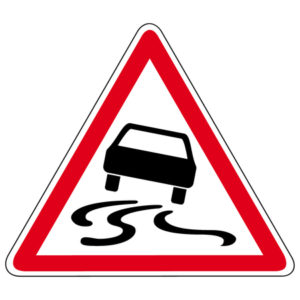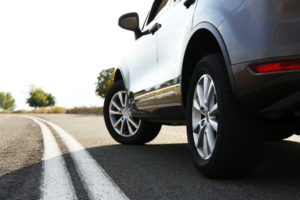There are few more alarming sensations than when your car suddenly behaves in a way you don’t expect. Fishtailing is one of those loss of control situations that happens when you least expect it. Without knowing what to do if your car starts fishtailing, you could spin out of control.
What is Fishtailing?
 Although the name sounds silly, the term ‘fishtailing’ is a good way to think about what happens during this type of loss of control. While the car is moving, the rear end of the car slides out of alignment with the front wheels and may waver back and forth, much like a fish swimming.
Although the name sounds silly, the term ‘fishtailing’ is a good way to think about what happens during this type of loss of control. While the car is moving, the rear end of the car slides out of alignment with the front wheels and may waver back and forth, much like a fish swimming.
The movement can be small and easily corrected, or it may be significant and could pose a traffic hazard. In any case, you’ll want to know how what to do if your car starts fishtailing so you can get to your destination safely.
Why do Cars Fishtail?
Whether a car is new, old, AWD or 4WD, every vehicle can potentially fishtail in the right (or wrong!) conditions. These reasons include:
 Road conditions, especially icy, snowy, wet, or slick conditions
Road conditions, especially icy, snowy, wet, or slick conditions- Curves and turns in the road
- Weight distribution where the front of the car is heavier than the rear
Cars are not limited to fishtailing on curves; this phenomenon can happen on straight roads too, such as when you are changing lanes or avoiding an unexpected obstacle in the road.
Fishtailing vs Hydroplaning
You may have heard of a phenomenon known as ‘hydroplaning’. Fishtailing and hydroplaning are similar in that you lose control of your vehicle by skidding, but they actually refer to two different issues.
Hydroplaning is a type of vehicle loss of control that only occurs when water is present on the road surface. During this type of loss of vehicle control, water gets between the surface of the road and the tire, causing the car to skid.
What to do If Your Car Starts Fishtailing
When your car starts to fishtail, your car will unfortunately not correct itself, instead turning into a full spin if you don’t act as quickly as possible. Spinning out will make it that much harder to redirect your vehicle and pose a potential hazard to other drivers too.
Correcting a fishtailing car is a fairly straightforward process. The sooner you can react to correct the issue, the more quickly you can get back to normal driving!
 Stay calm
Stay calm- Let go of the accelerator and brake
- Gently turn the wheel in the direction of the spin or skid
- Let your car naturally slow
- Correct the fishtail and adjust your driving speed
It’s important to remain calm when your car starts to fishtail. Once your car begins to skid out of control, you could actually cause the car to fishtail to the other side if you oversteer to correct the problem. This could lead to a series of fishtails and pose a potentially serious hazard to yourself and other drivers.
Although it may be difficult to remember in the moment, gentle movements and adjustments will help return your car back to control. Jerking the wheel will make things worse.
Fishtailing most often happens when driving too quickly for conditions. If your car has fishtailed once during a particular stretch of road, chances are it will happen again. Adjust your driving speed to fit the conditions.










Leave a Reply
You must be logged in to post a comment.